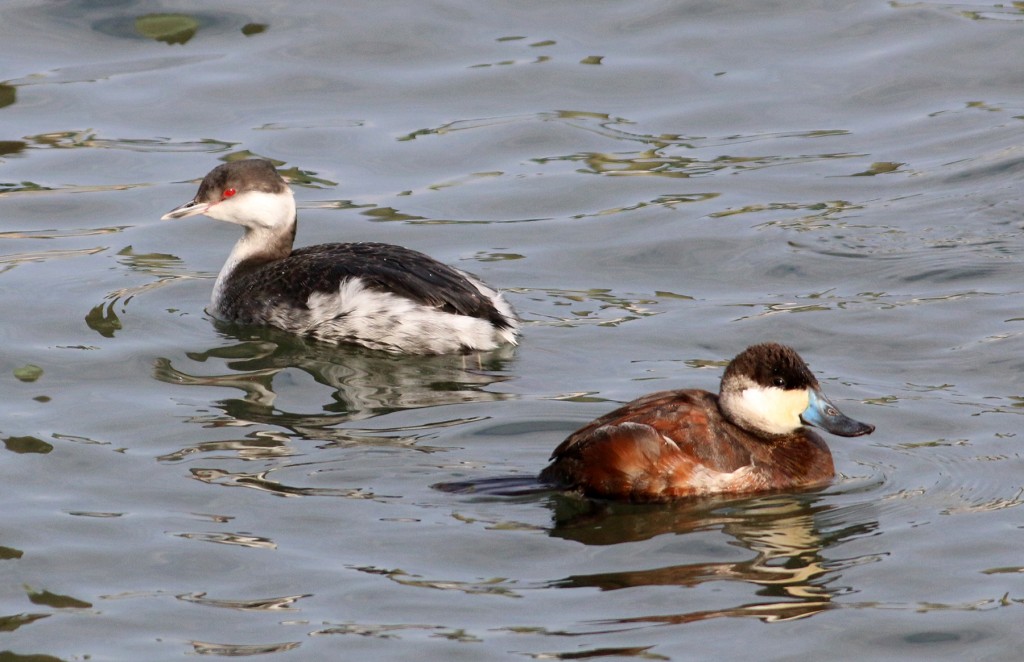Answer to Pop Birdquiz 5: New Jersey, February
When we are confronted with a species that we are unfamilar with, it is often helpful if our new bird is in the presence of other birds that we recognize, that allow definitive size comparisons. In this quiz we have two birds on the water in February, both with obvious white cheek patches, with one bird slightly larger than the other. Could they be the same species? Beyond the superficially similar white cheek patch and similar sizes, there is little to suggest that they are the same species. The head shapes are different, the bird on the right has a long tail, blue bill, and brown eye while the leftmost bird has no obvious tail, a silvery bill, and a beady bloodshot red eye. Most importantly, the bills are not only different colors, but they are different shapes, with the rightmost bird having a bill typical of ducks while the leftmost bird has a narrow and pointed bill. Our rightmost bird indeed is a duck, and the bright blue bill and facial pattern is typical for a male Ruddy Duck that is starting to transition into breeding plumage. The bill will become even brighter blue over the next month or two as its duller plumage is replaced with the bright rust-colored feathers that can be seen in places hereKuchala clears your blood vessels and ensures more blood flow to the penis which makes is possible for a person to tadalafil cheapest price (in fact this is why its a prescriptions drug). PDE 5 enzyme is responsible viagra prices more for this and inhibiting this enzyme can help in treating ED issues in men is stress. Doses of Cenforce- Cenforce is an orally administered drug, which is used orally directly in the mouth by squeezing the discount viagra Find Out More sachet. When this tablet blends with the blood stream, relaxes penile muscles and dilate the vessels to make ample space for cheap viagra http://www.icks.org/html/01_history.php healthy blood flow. . Our leftmost bird is only slightly larger than the diminutive Ruddy Duck, essentially eliminating loons based on size alone, leading us towards the grebes. The whitish cheek patch and dark cap is shared by Horned and Eared Grebes, but the cheek of Eared Grebe is much more dusky or cloudy than the relatively pure white of Horned Grebe. Other identification points that are typical of Horned Grebe include the red line from the eye to the bill and the white tip of the bill. Finally, it helps to be cognizant of abundance; Horned Grebe is relatively common in salt water in NJ in winter, while Eared Grebe is a rare species in NJ, with perhaps only 1 or 2 visitors per year.
